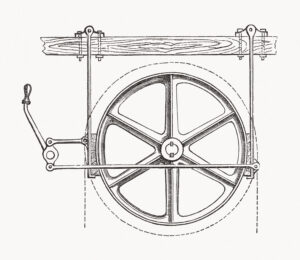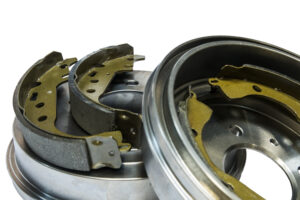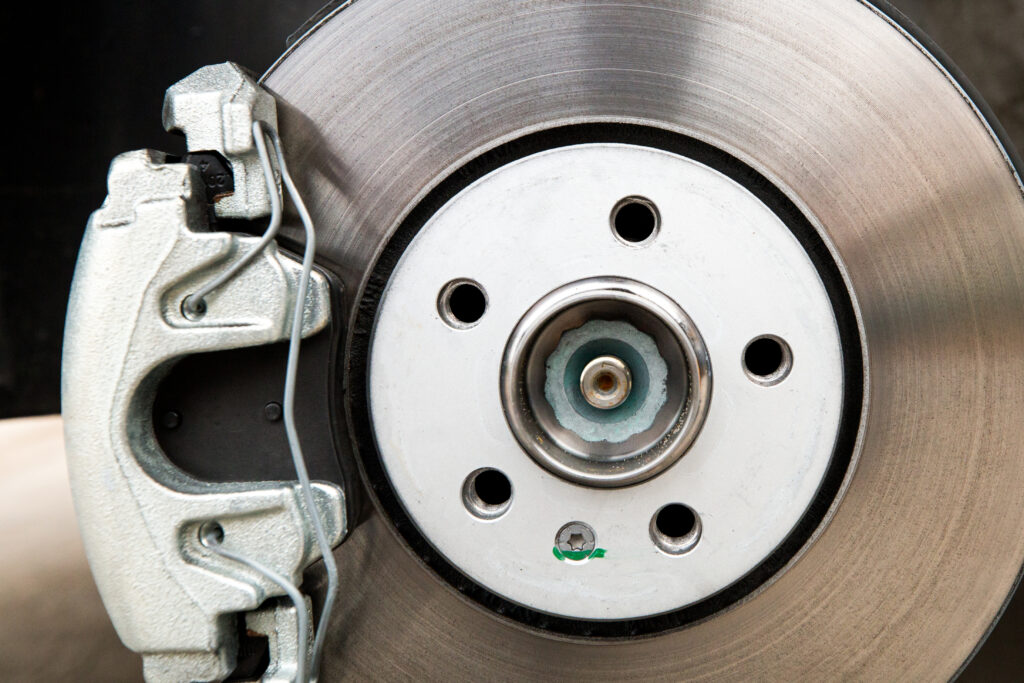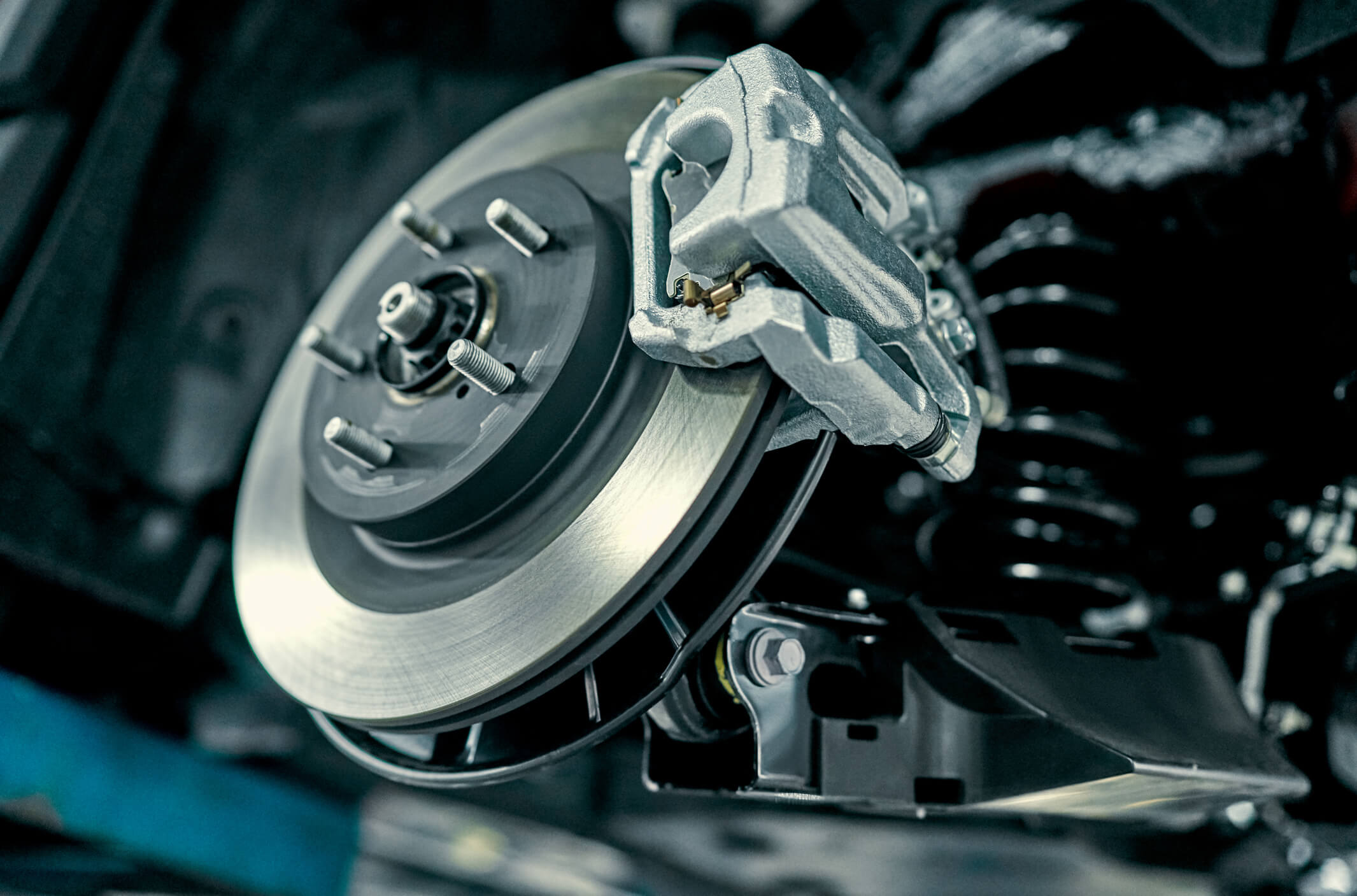Modern braking and brake assist systems are very impressive. Their manufacturers compete with each other to provide the most efficient and comfortable braking solutions. However, the road to achieving the present-day engineering solutions was long.
The beginnings of braking systems

The importance of brakes in modern cars is undisputed. The braking system is one of the most important car systems today. But brakes haven’t always been so important. In the beginning of the automotive industry inventors focused on figuring out how to get the car going rather than on how to put into a stop. The internal resistance of machines combined with other, simple means were the braking systems of the day. The first automobiles were stopped by means of levers pressing a wooden pad to the wheel rim or by other braking means used in carriages. In fact, cars resembled carriages and therefore shared a lot of design features with them.
It wasn’t long, though, before it was noticed that such improvised brakes were not very efficient. Wooden pads would quickly wear out in contact with the wheels and did not provide sufficient braking power on steep roads. And people wanted to go faster and faster. Different solutions were tested with the aim to convert the kinetic energy into thermal energy by means of a more efficient method. More and more efficient linings were used e.g. made of copper, which increased the friction force. However, they had one significant shortcoming – they were very loud in contact with the metallic wheels. To remedy this, they would be covered with soft friction materials, e.g. asbestos, cotton or rubber. These solutions were sufficient as cars were unable to go fast.
Tires – a new challenge for car brakes
The development of brakes has been largely influenced by pneumatic tires. They provided better comfort on uneven terrain and allowed driving at higher speeds but did not work well with the primitive brakes of the day. A pad pressed directly against a tire may have worked on a bike but not on a much heavier automobile. So, a new type of brake was developed, one that is hidden inside the wheel. Contrary to what one might expect, the drum brake and the disc brake were conceived around the same time.
The first disc brake was invented in 1902 by Frederic Wilhelm Lanchester, an English engineer, while the drum brake was patented by Louis Renault the same year. Other engineers, including Gottlieb Daimler and Wilhelm Maybach, had also experimented with drum brakes, but it was Renault’s design that prevailed. Rather than a cast iron drum wrapped in ropes, he applied a much more effective solution, i.e. brake shoes pushing against the drum. This brake type has survived until today. Of course not without modifications.
Hydraulics in braking systems
The first car brakes were fully mechanical and powered solely by the driver’s muscle power. Initially, only rear wheels were equipped with brakes. A car with brakes on all four wheels was not conceived until 1909, mainly due to insufficient engineering knowledge, which hampered the invention of brakes ensuring car stability. Controlled by means of steel lines, the drums operated with varied force and synchronizing four pairs of brake shoes was a bit of a problem.
A breakthrough came in 1917, when Malcolm Loughead, who later became known as Lockhead, patented hydraulic brakes. This type of brakes was first invented by Hugo Meyer of Germany in 1895, but it didn’t catch on. Lockead’s brakes were the first mass-produced hydraulic brakes. Application of a hydraulic fluid changed a lot. Firstly, the braking force was increased. Secondly, the problem of cracking and loosening cables was eliminated, as a result of which brakes became more convenient to use. The first hydraulic brakes were notorious for leaks, but they were far more reliable than the mechanical brakes.
A few years later, in 1928, an additional feature was added – brake assist. A brake servo used negative pressure generated in the inlet system to increase the braking force. After pressing the brake pedal the master cylinder was activated and a valve released the negative pressure from the intake manifold. The pressure difference between the two parts of the membrane generated a force that additionally supported the master cylinder piston. The force was directly proportional to how far the brake pedal was pressed. This way the driver could easily control the braking force. As brakes became more and more efficient, cars could go faster and faster.
Gradual decline of drum brakes

Drum brakes dominated the automotive industry for many years. You can still come across them on the rear axle of some small and not very powerful cars, e.g. town cars. They owed their success to pure chance. Robust as they are, drums are resistant to different road conditions and are not as ineffective as many might think. They have a problem with high temperature, though.
The tightly closed brake drum made it difficult to dissipate heat. Expansion of the brake shoes required much force and application of a large and heavy drum. The drum brakes were also faulty. Although they were simple in design and had a closed housing, their shoes would frequently get jammed, resulting in overheating of the brakes. This would result in a sudden loss of the braking force and lead to dangerous situations. Fortunately, disc brakes were invented.
Squeezing or how disc brakes work
Like many other new inventions, the first modern disc brakes made their debut in sport. In 1993, a Jaguar XK equipped with four Dunlop disc brakes won the 24-hour Le Mans race. The revolution of the braking systems had begun.
Unlike the copper brake linings of 1902, the modern pads did not squeak or wear out as fast. Soon, more advance friction linings would be applied, such as ceramics, semi-metallic mixes or Kevlar. Asbestos, which had been found to cause cancer, would soon be dropped. All brake pads use the same, basic advantage of the disc brake – higher efficiency even during dynamic driving.

The key is dissipation of heat from the disc brakes. They are cooled by wind, transfer heat to the rims and may additionally feature special ventilation holes. They are ideal for driving in the mountains, dynamic driving and emergency braking. The pistons exert pressure on the friction lining and, consequently, on the brake disc. They are also more compatible with the driver assist systems such as ABS or ESP. Squeezing turns out to be a better braking method than pushing. Callipers prevail over shoes.
The future of car brakes
Research and development centres continue their efforts to design even more efficient brakes. The braking systems continue to change in terms of materials and design. More and more manufacturers are applying the so-called scorching, i.e. short-term heating of the brake pad surface to 600-800 °C to increase their resistance to fading, i.e. a fall in the lining efficiency caused by temperature. The manufacturers are also paying more attention to reducing vibrations and squeaky noises. Good-quality pads feature an interlayer that reduces the noises and vibrations.
It looks like the braking systems will soon have much less work to do than today. The development of hybrid and electric cars makes energy recovery systems an increasingly serious alternative to brakes. The recovery systems known until recently from the Formula 1 cars are growing in popularity. The energy generated during braking is no longer transformed into heat and irretrievably lost, but is converted into electrical energy instead. Of course, energy recovery will not replace conventional disc brakes nor will be enough during hard braking. However, it can easily reduce the wear and tear of brake discs and pads during easy, everyday driving. We will soon find out whether the experts’ were right in their predictions.


